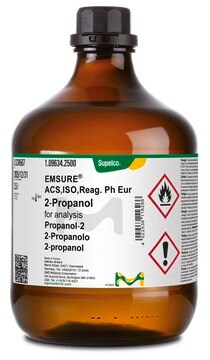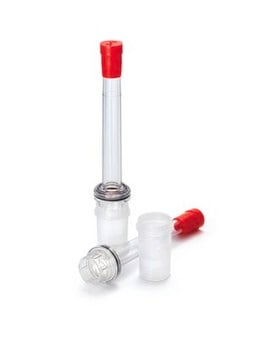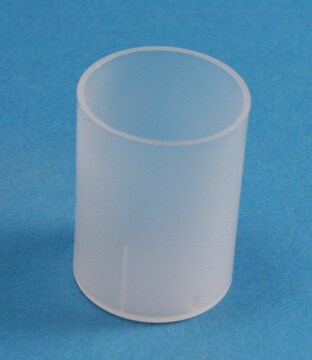Kluczowe dokumenty
V800444
Xylenes
AR, sulfur free, ≥99%
Synonim(y):
Xylene mixture of isomers
About This Item
Polecane produkty
klasa czystości
AR
ciśnienie pary
18 mmHg ( 37.7 °C)
linia produktu
Vetec™
Próba
≥99%
Formularz
liquid
granice wybuchowości
7 %
dilution
(for analytical testing)
współczynnik refrakcji
n20/D 1.497 (lit.)
bp
137-140 °C (lit.)
gęstość
0.86 g/mL at 25 °C (lit.)
ciąg SMILES
Cc1ccc(C)cc1.Cc2cccc(C)c2.Cc3ccccc3C
InChI
1S/3C8H10/c1-7-3-5-8(2)6-4-7;1-7-4-3-5-8(2)6-7;1-7-5-3-4-6-8(7)2/h3*3-6H,1-2H3
Klucz InChI
MVZVDAGWAAZJPE-UHFFFAOYSA-N
Szukasz podobnych produktów? Odwiedź Przewodnik dotyczący porównywania produktów
Informacje prawne
Hasło ostrzegawcze
Danger
Zwroty wskazujące rodzaj zagrożenia
Zwroty wskazujące środki ostrożności
Klasyfikacja zagrożeń
Acute Tox. 4 Dermal - Acute Tox. 4 Inhalation - Aquatic Chronic 3 - Asp. Tox. 1 - Eye Irrit. 2 - Flam. Liq. 3 - Skin Irrit. 2 - STOT RE 2 Inhalation - STOT SE 3
Organy docelowe
Central nervous system,Liver,Kidney, Respiratory system
Kod klasy składowania
3 - Flammable liquids
Klasa zagrożenia wodnego (WGK)
WGK 2
Temperatura zapłonu (°F)
77.0 °F - closed cup
Temperatura zapłonu (°C)
25 °C - closed cup
Wybierz jedną z najnowszych wersji:
Masz już ten produkt?
Dokumenty związane z niedawno zakupionymi produktami zostały zamieszczone w Bibliotece dokumentów.
Nasz zespół naukowców ma doświadczenie we wszystkich obszarach badań, w tym w naukach przyrodniczych, materiałoznawstwie, syntezie chemicznej, chromatografii, analityce i wielu innych dziedzinach.
Skontaktuj się z zespołem ds. pomocy technicznej









